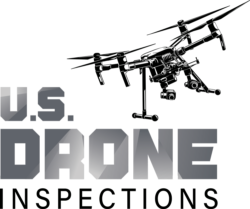Drones are changing agriculture. They are now being used to gather useful and actionable information about crops and livestock. U.S Drone Inspections can provide an aerial view of farm and ranch lands to collect data as a cost-conscious replacement for satellite and aerial data collected from helicopters and planes. Our tools provide data to help maximize and estimate yields, track changes in crop or animal health, or inspect for needed drainage and irrigation repairs.
Farmers, agronomists, ranchers, and stakeholders in agriculture are switching to U.S. Drones for cost savings through:
- Real-time In-Field Insights in HD clairity
- Scouting hundreds of acres in a short period of time
- Detecting problems and measuring plant or animal health instantly
- The ability to detect threats with NDVI, VARI, and more
Soil and Field Analysis
From the beginning to the end of a crop cycle drones can be used to help obtain useful data surrounding the quality of the existing soil. By obtaining 3D maps of existing soil, you’ll be able to see if there are any issues surrounding soil quality, nutrient management, or soil dead zones.
This information can help farmers determine the most effective patterns for planting, managing crops, soil, and more. Ongoing monitoring can help to better utilize water resources, and more effectively manage crop nutrient levels.
Crop Mapping and Surveying
One of the biggest advantages of using drone technology is the ease and effectiveness of large-scale crop and acreage monitoring. In the past, satellite or plane imagery was used to help get a large scale view of the farm, while helping to spot potential issues.
However, these images were not only expensive to obtain but lacked the precision and detail that drones can provide. Today, you can not only obtain real-time footage but also time-based animation which can illuminate crop progression in real-time.
With drone mapping and surveying, technology decisions can now be made based on real-time data, not outdated imagery, or best-practice guesswork.
With Near Infrared (NIR) drone sensors, you can actually determine plant health based upon light absorption, giving you a birds-eye view of the overall farm health.
With U.S. Drones agricultural services you’ll be able to collect information like:
- The overall crop and plant health
- Land distribution based on crop type
- Current crop life cycle
- Detailed GPS maps of current crop area
The end result is simple, drones can help to maximize land and resource usage, and help farmers better determine crop planting locations.
Irrigation Monitoring and Management
Irrigation can be troublesome. With miles and miles of irrigation, issues are bound to arise. Our drones are equipped with thermal cameras that can help to spot irrigation issues such as areas that are receiving too little or excessive moisture.
With this information, crops can be better laid out to maximize drainage, adhere to natural land runoff, and avoid water pooling, which can damage sensitive crops.
Water and irrigation issues are not only costly but can ruin crop yields as well. With drone surveying, these issues can be spotted before they become troublesome.
Real-Time Livestock Monitoring
U.S. Drones have specialized drones equipped with thermal imaging cameras that enable a single licensed pilot to manage and monitor vast groups of livestock. This allows farmers to keep track of livestock much grander scale, with less time, and staff investment.
Drones are used to keep an eye on your heard at all times, a once costly and time-intensive task. The drone operator can quickly check in on herd to see if there are any injured or missing livestock, as well as see livestock who are giving birth. Plus, thermal imaging will also help to keep an eye out for any livestock predators, which is a huge advantage for livestock owners.
Maximize crop yields, protect your livestock, and inspect irrigation with U.S. Drone Inspections.

